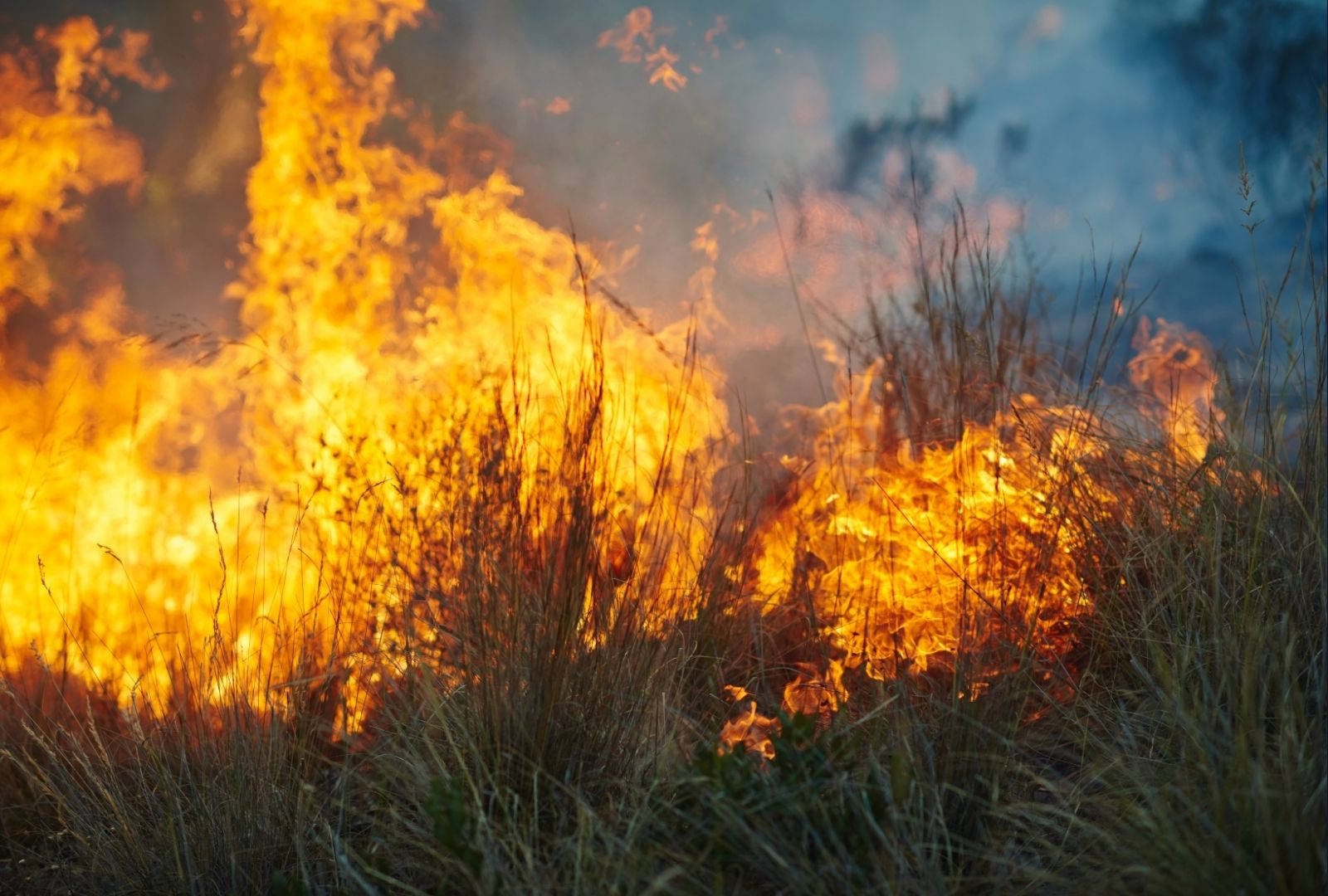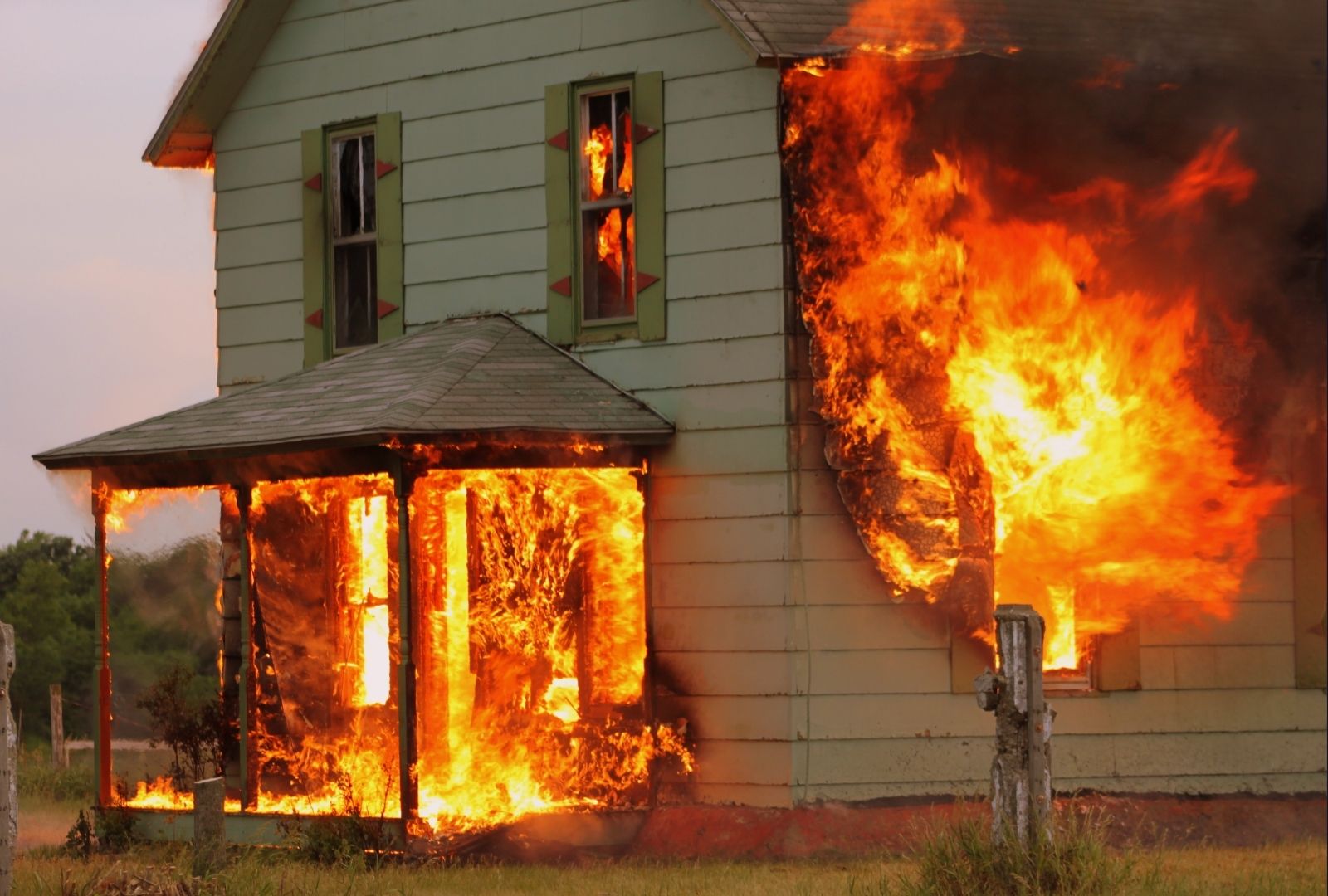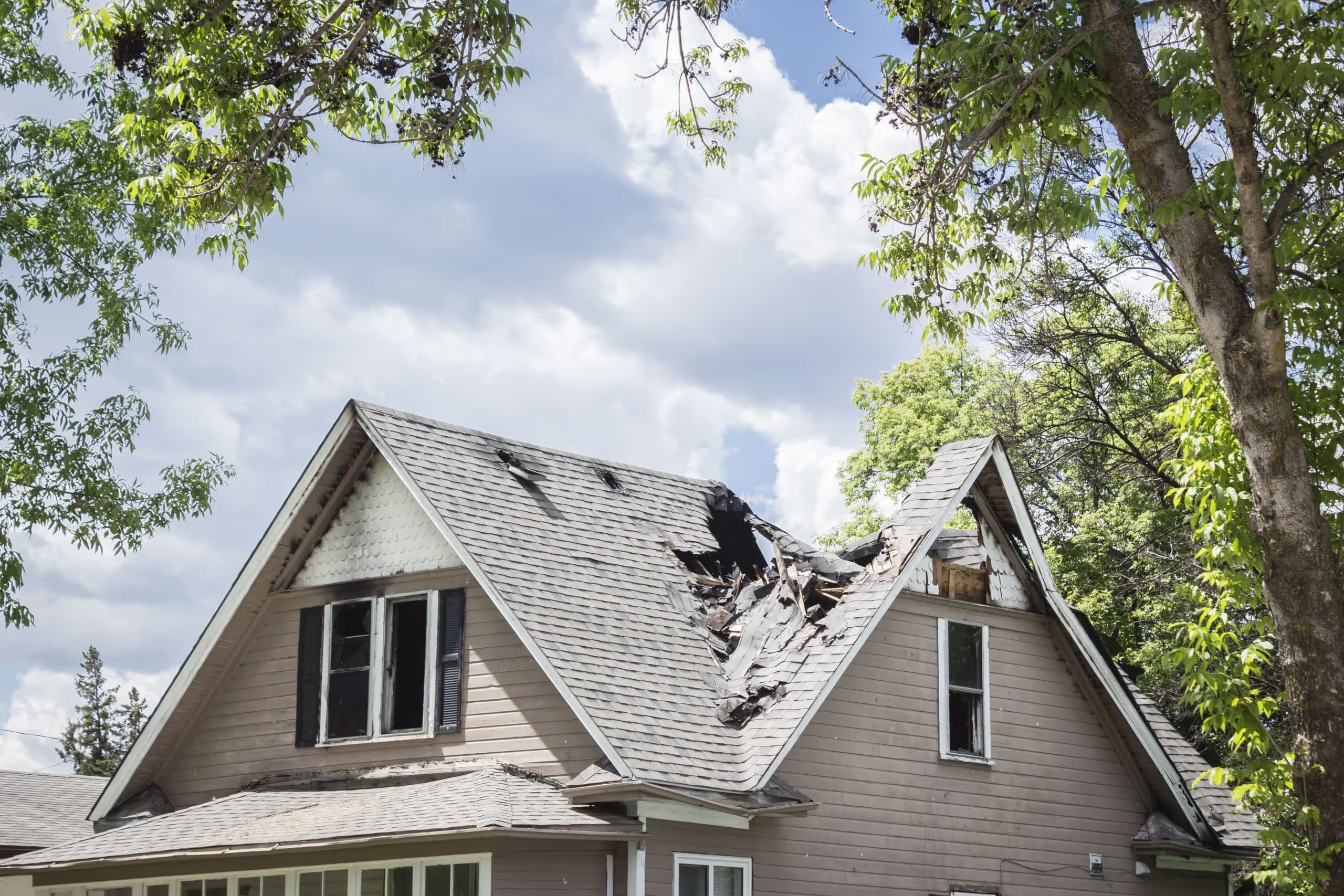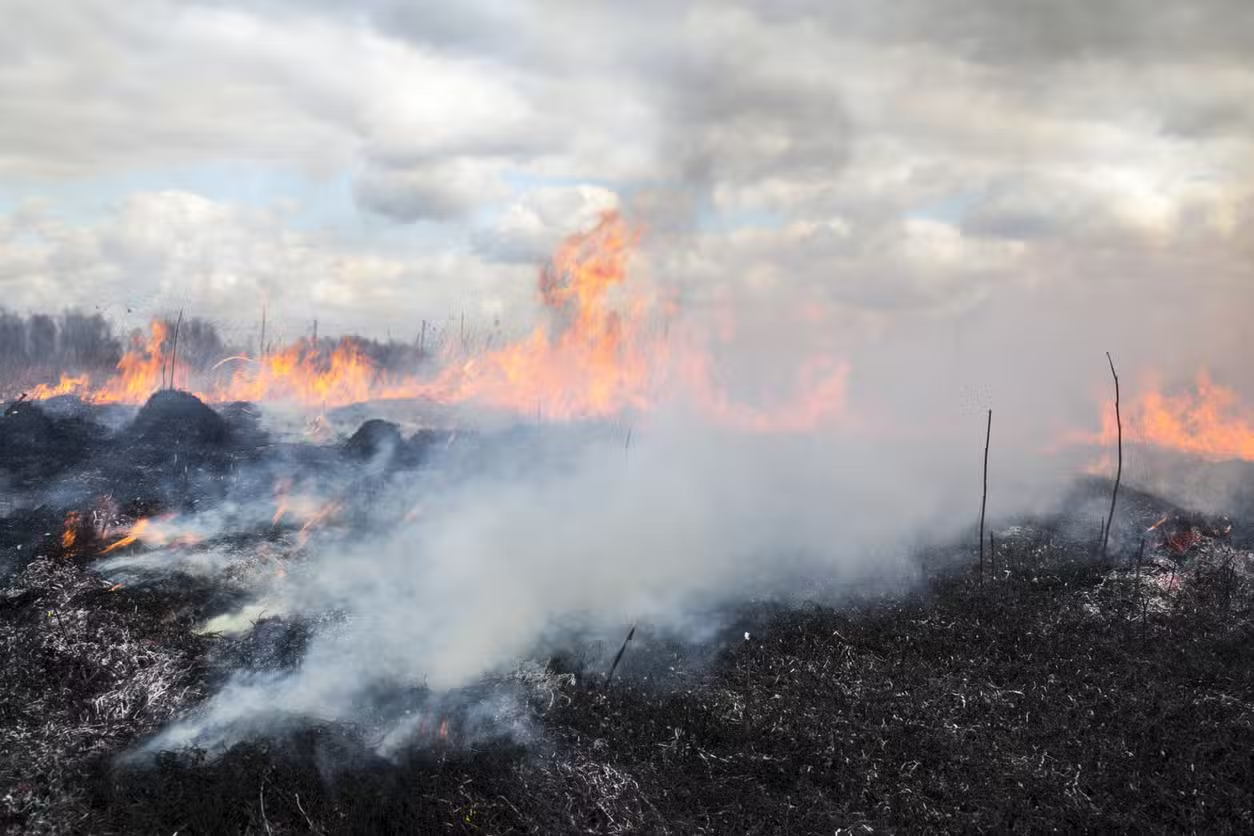Fire damage restoration is a multi-phase process that includes assessment, cleanup, structural repair, and often, complete property reconstruction. Whether a fire has partially damaged a kitchen or destroyed a large section of a building, professional restoration is critical to ensure safety and compliance.
If your property has sustained serious damage, contact a fire damage attorney early in the process to preserve evidence, handle insurance disputes, and protect your legal rights.
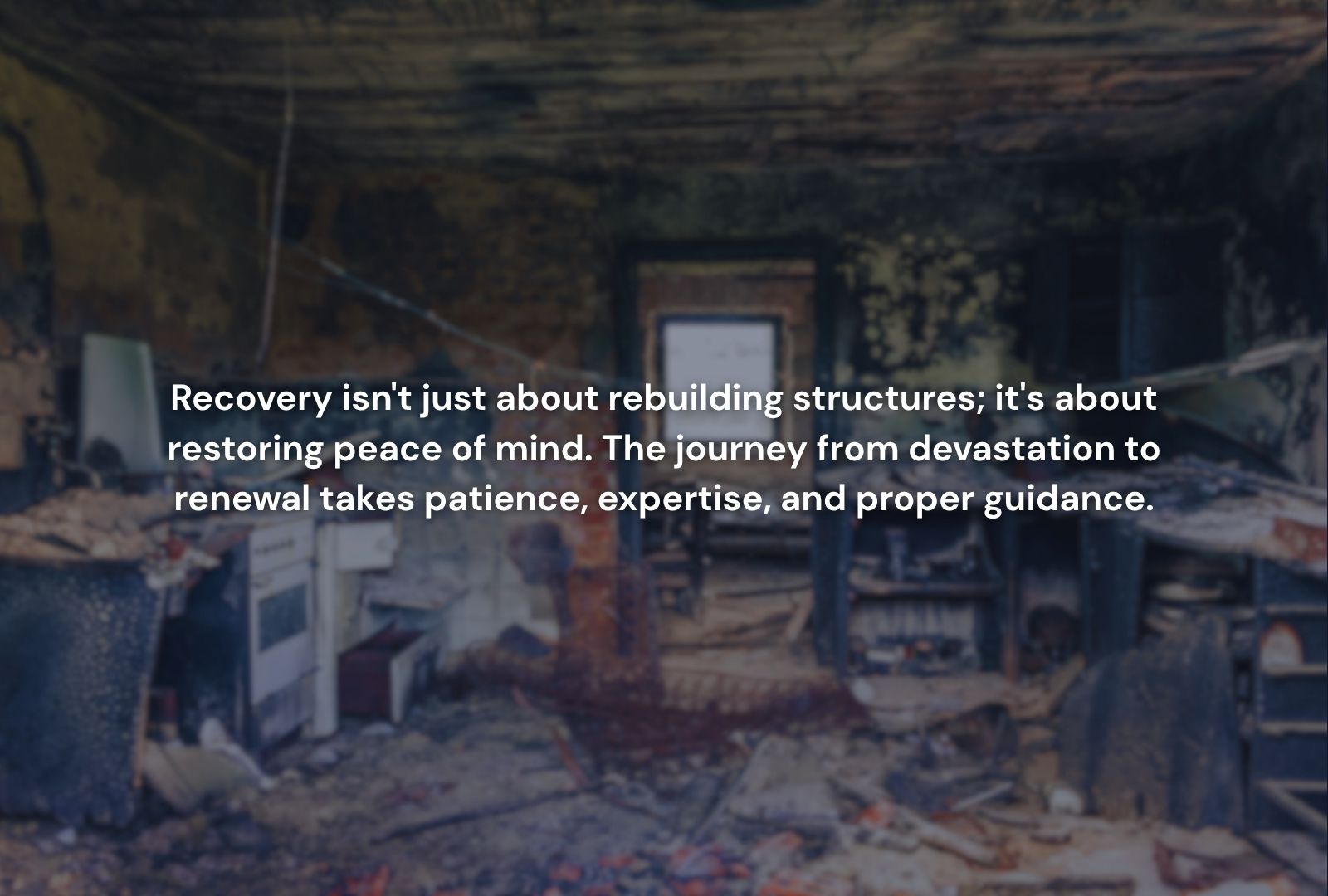
Step 1: Initial Damage Assessment
Restoration begins with a thorough assessment to determine the extent of structural, smoke, soot, and water damage. Restoration professionals examine:
- Structural integrity of walls, floors, and roofing
- Smoke infiltration and soot buildup in hidden areas
- Water damage from firefighting efforts
Documentation is crucial. Technicians photograph and inventory all damaged areas and items. This report helps with insurance claims and future legal matters.
Step 2: Property Stabilization and Board-Up
To prevent further damage or theft, the next step involves:
- Boarding up broken windows and doors
- Tarping exposed roofs
- Installing temporary fencing if needed
This stabilizes the property and ensures the safety of both workers and occupants during the cleanup process.
Step 3: Water Removal and Drying
Water from fire suppression must be addressed quickly to prevent mold and structural deterioration. Professionals:
- Use industrial vacuums and pumps to extract standing water
- Deploy dehumidifiers and air movers to dry materials
- Monitor moisture levels inside walls and subflooring
Mold prevention is a major priority at this stage.
Step 4: Smoke and Soot Removal
Smoke and soot can penetrate deeply into walls, ceilings, ductwork, and personal belongings. Restoration crews:
- Use HEPA vacuums, air scrubbers, and ozone machines
- Clean surfaces with specialized chemical agents
- Seal HVAC ducts to prevent cross-contamination
Proper removal improves air quality and reduces long-term health risks.
Step 5: Cleaning and Sanitizing
This phase targets residual contaminants and odors:
- Disinfect surfaces to eliminate bacteria and mold spores
- Use thermal fogging or hydroxyl generators to neutralize odor
- Clean salvageable personal items with ultrasonic cleaning or dry-cleaning methods
All unsalvageable items are documented for insurance purposes.
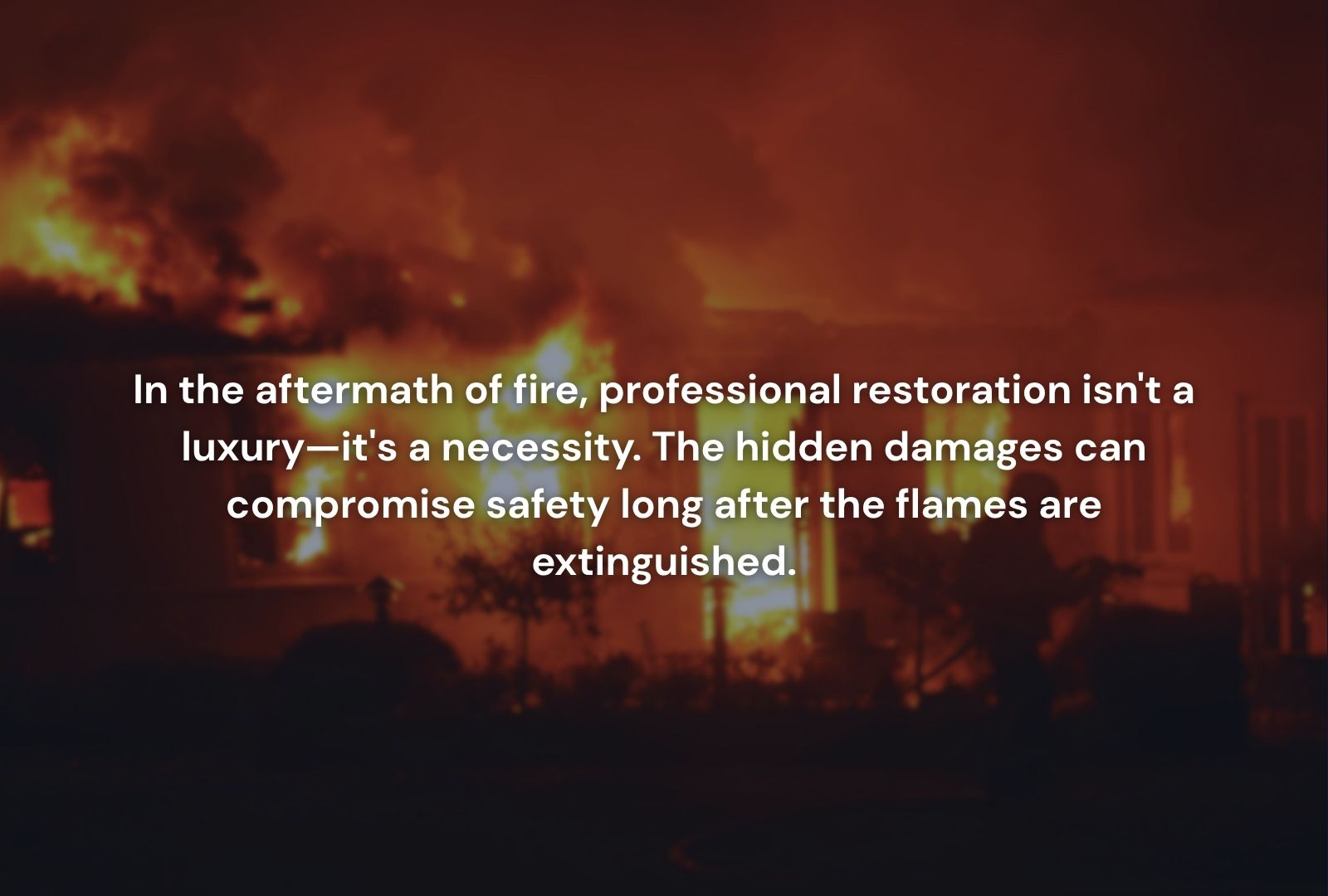
Step 6: Structural Repair and Rebuild
Depending on the extent of damage, repair can include:
- Framing and drywall replacement
- Flooring and subfloor installation
- Electrical, plumbing, and HVAC system repairs
Contractors ensure the building is brought up to code, and many restoration companies handle the rebuild as a single service.
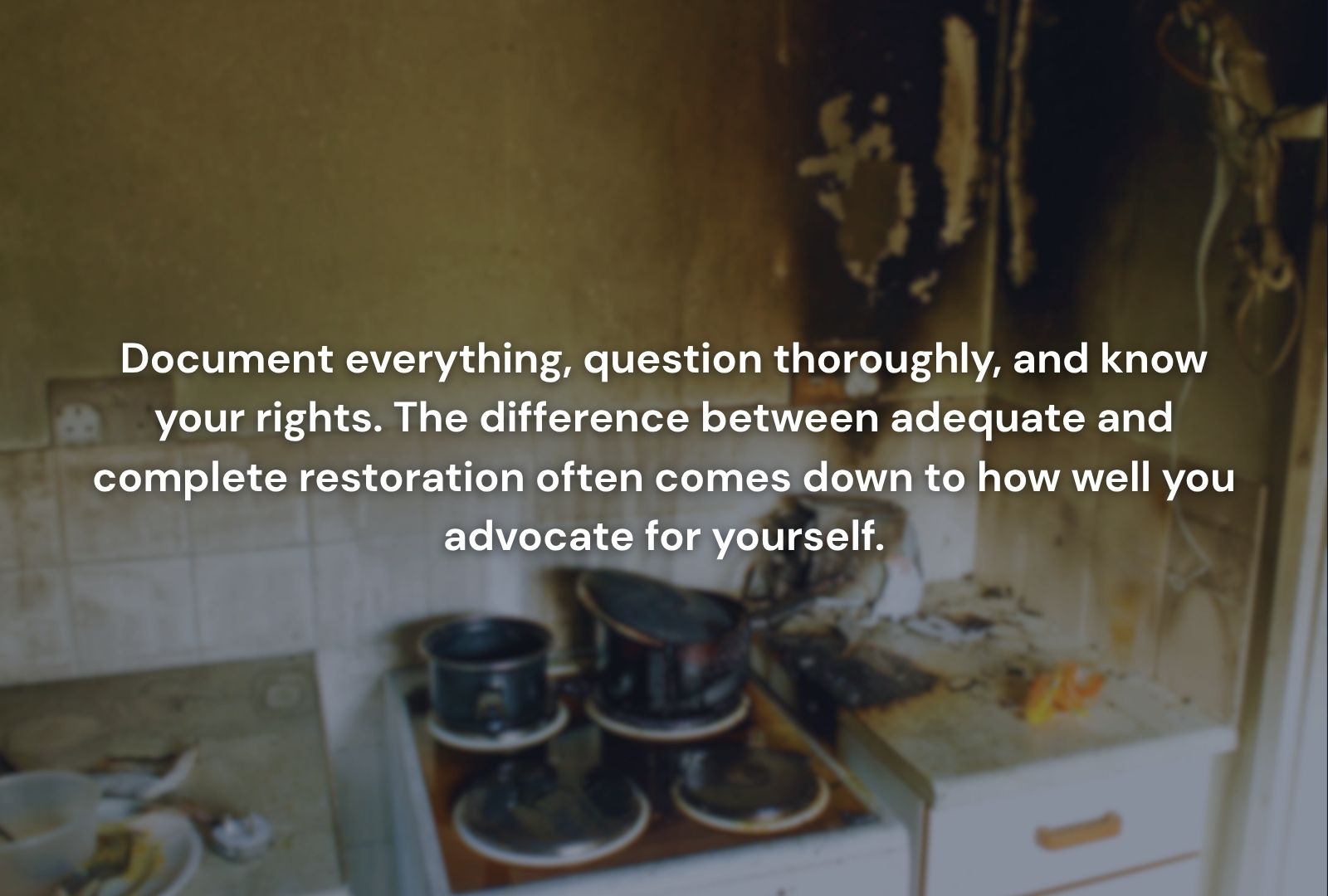
Related Topics to Deepen Your Understanding
To fully grasp your restoration and legal options, explore connected areas:
- Fire damage insurance claims: Understand how to file, negotiate, and appeal when coverage is denied or limited.
- Smoke damage claims: Smoke can be more invasive than flames—learn how to assess and claim for lingering effects.
- Emergency fire assistance: Discover resources for immediate shelter, food, and basic needs in the first 24–72 hours after a fire.
Each of these topics provides additional guidance during and after restoration.




